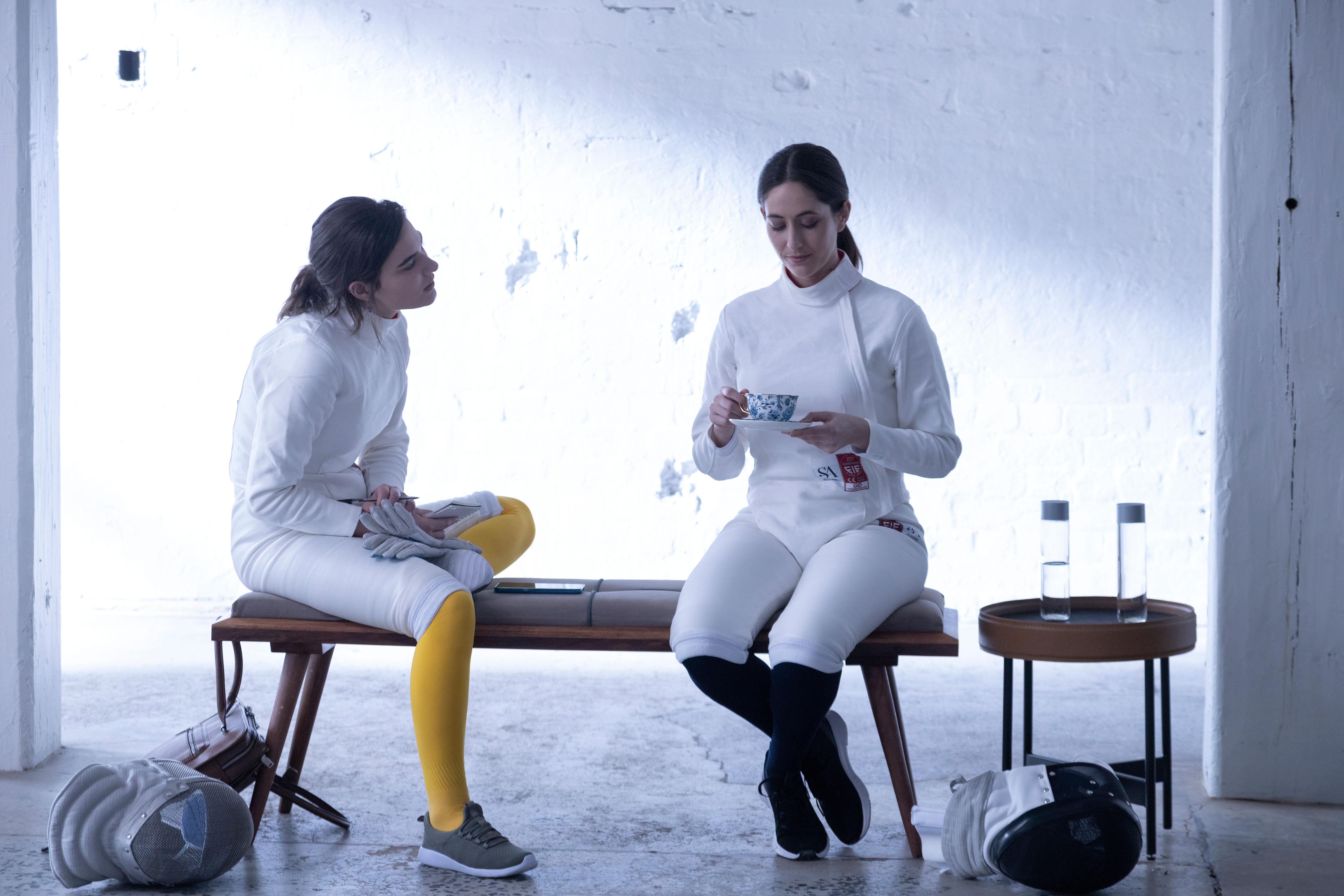Learning Intentions
- Define speculative fiction as a genre of writing.
- Examine how our world and current issues can be adapted into fiction.
- Practice research to find credible sources.
Learning Intentions

Review the interview with The PM’s Daughter Series 2 script producer, Jessica Paine, to explore how the writers worked with speculative fiction as a genre of storytelling.
Through an individual writing task or class discussion, brainstorm words associated with the ‘Speculative Fiction’ genre. Look up the words ‘speculative’ and ‘fiction’ separately to source the definition when these words are combined.
Research the genre to observe the different ways speculative fiction has been interpreted in texts. Then, consider why digital technology could be important in a speculative fiction story.
Writers often engage with the real world to source inspiration that informs their ideas. Jessica Paine talked about how current issues can be built on to inform future possibilities when developing stories. For example, writers incorporated current digital technologies in The PM’s Daughter Series 2 storylines.
Engage with current and credible media sources to identify and research a current issue in the news. Document how this current issue could be built on in speculative fiction by listing 3-5 future possibilities.
Need help to confirm credible sources? Play the ABC Education Fact Checker Game.
|
|
Year 8 |
Years 9 |
Years 10 |
|
Analysis, evaluation and interpretation |
Locate, select and organise information, data and ideas from different sources. |
Locate, select and compare information, data and ideas from a range of sources. |
Analyse information, data and ideas about political, legal or civic issues to identify and evaluate differences in perspectives and interpretations. |
|
|
Year 8 |
Year 9 |
Year 10 |
|
Language | Text structure and organisation |
Explain how texts are structured depending on their purpose and how language features vary, recognising that some texts are hybrids that combine different genres or elements of different genres. Identify and use vocabulary typical of academic texts. |
Examine how authors adapt and subvert text structures and language features by experimenting with spoken, written, visual and multimodal elements, and their combination. Analyse how vocabulary choices contribute to style, mood and tone. |
Analyse text structures and language features and evaluate their effectiveness in achieving their purpose. Use an expanded technical and academic vocabulary for precision when writing academic texts. |
|
Literacy | Texts in context |
Identify how texts reflect contexts. Use comprehension strategies such as visualising, predicting, connecting, summarising, monitoring, questioning and inferring to interpret and evaluate ideas in texts. |
Analyse how representations of people, places, events and concepts reflect contexts. Use comprehension strategies such as visualising, predicting, connecting, summarising, monitoring, questioning and inferring to compare and contrast ideas and opinions in and between texts. |
Analyse and evaluate how people, places, events and concepts are represented in texts and reflect contexts. Analyse and evaluate how language features are used to implicitly or explicitly represent values, beliefs and attitudes. |
|
|
Year 8 |
Year 9 |
Year 10 |
|
Exploring and responding |
Investigate the ways that media arts concepts are used in media arts works and practices across cultures, times, places and/or other contexts. |
Investigate the ways that media artists use media arts concepts to construct representations in media arts works and practices across cultures, times, places and/or other contexts. |
|
|
|
Year 8 |
Year 9 |
Year 10 |
|
Inquiring - Identify, process and evaluate information |
Identify and clarify significant information and opinion from a range of sources, including visual information and digital sources. |
|
|
|
Inquiring - Identify, process and evaluate information |
|
Identify and clarify significant information and opinion from a range of sources, including visual information and digital sources. |
|
|
Analysing - Interpret concepts and problems |
|
Evaluate the information selected to determine bias and reliability. |
|
|
Analysing - Draw conclusions and provide reasons |
Draw conclusions and make choices when completing tasks by connecting evidence from within and across discipline areas to provide reasons and evaluate arguments for choices made. |
|
|
|
Reflecting - Transfer knowledge |
Transfer knowledge and skills gained in previous experiences to both similar and different contexts, and explain reasons for decisions and choices made. |
|
|